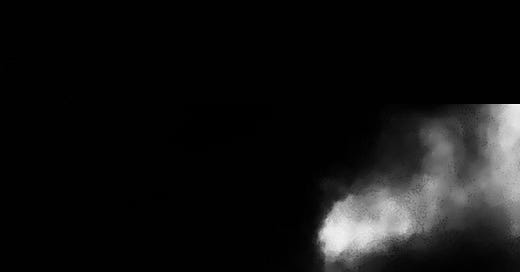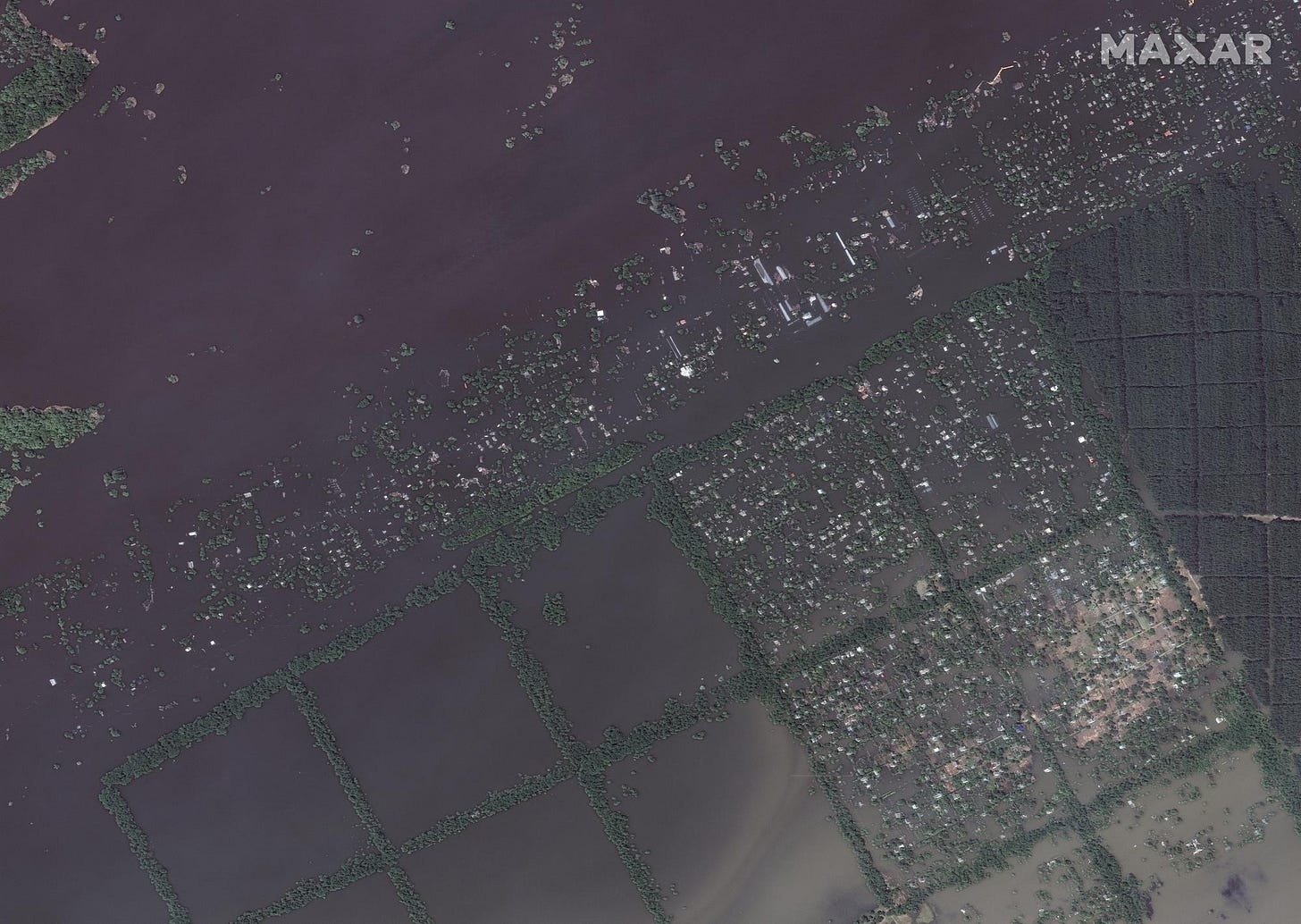When a dam fails (almost instantly) then this is a very extreme event and the short-term impacts are extremely challenging, with longer terms impacts also being considerable in many cases.
Put into context, the modelling of flooding due to extreme storm events can now be modelled accurately using a number of widely used computational hydrodynamic models. However, modelling dam break flows, and the sudden wave effects, requires much more complex models as the water wave propagating downstream is supercritical and similar in context to supersonic flight etc., i.e., the wave is travelling faster than the natural speed of a wave disturbance in water.
Roger Falconer, Professor of Water Management, Cardiff University
When a dam breaks, we can be confident bad things will follow. To what extent we can accurately forecast where exactly the water will rush to, what the precise damage will be, that is much more difficult to predict, as Falconer explains. War is much the same.
Wars are a distinctive mixture of highly contingent, historically distinctive features and relatively constant dynamics that tend to reappear. Once conflict begins, a logic of escalation generally sets in: as death and destruction increases, attitudes harden and relationships of enmity deepen. This has certainly been the case in the war in the Ukraine, in which the direction of travel has been overwhelmingly unidirectional, a steady march downwards to further destruction and hatred. As an example of this dynamic, consider The Guardian’s daily summary of the war for today, 20 June:
What do we know? More escalation to come. And after that?
Another constant of war is the inevitability of death, damage and loss. War is a destroyer of worlds. In a previous note at the end of last year, I reflected on the need to seriously reckon with the brute realities of conflict:
Part of taking war seriously means focusing on its consequences, moving from the macro to the micro and back again, and in doing so, recognising the damage and harm done. Reckoning with the destruction, the unexpected and unwanted consequences of war, is a weighty counter to the still dominant trajectory of tacit support or acceptance for escalation. As we reach the end of a year full of nasty shocks, we need to be wary of collectively heading down a path that will increase the likelihood of considerably worse outcomes.
And in the six months since that note was published? Offensive and counter-offensive, escalation and more escalation. This has reflected the trajectory of the conflict to date, with little indication of any side seeking an off-ramp to the conflict.
With those observations in mind, let us turn to the recent destruction of the Nova Kakhovka dam on 6 June 2023, a humanitarian and environmental disaster of considerable scale. It is tempting to describe it as a horrible new form of suffering for people in the region, but what is so disturbing is that it is not the first time. During the extreme fighting on the eastern front in World War 2, the Dnipro dam near Zaporizhzhia was destroyed twice, first by the Soviets in 1941 as part of their scorched earth retreat, and then by the Nazis in 1943. Describing the first of these - a ‘gigantic act of sacrificial sabotage’ - The Guardian wrote at the time:
The destruction of the Dnieper dam, which fed the most powerful hydroelectric plant in Europe and took eight years to complete, is the most spectacular act of destruction in Russia since the burning of Moscow in 1812.
An eery mixture of the contingent and the consistent.
Turning to the destruction of the Kakhovka dam earlier this month, the UN Country Team in Ukraine outlined the damage:
The Kakhovka reservoir played a crucial role in providing energy, drinking water, irrigation, and river transport to various regions in southern Ukraine, as well as supplying water for industries in Kryvyi Rih, Nikopol, Marhanets, and other cities and areas. The release of over 18 cubic km of water within a span of 3-4 days poses a significant threat to nearly 80 settlements, potentially affecting around 100,000 inhabitants directly, while up to one million people could lose access to drinking water.
UN OCHA indicated the immediate humanitarian needs:
…support with water, hygiene items, and food, also in addition to accommodation, shelter and essential household items, will be crucial to prevent a worsening humanitarian crisis.
The satellite images from Maxar Technologies (via AP) show the scope of the destruction clearly:
Whereas the first image captures the brute humanitarian consequences: houses and cities submerged, people killed and displaced, the second image points to another ramification, showing a granary now under water. This points to a secondary consequences of the disaster, insofar as the region is important for agriculture. The damage to the ecosystem is expected to be far-reaching and long-term, with other consequences including the spread of pollutants and industrial waste, the dislodging of landmines, and the massive impact to flora and fauna.
The UN Country Team report breaks down the potential long-term damage into the following categories: (1) Health, water and sanitation; (2) Chemical hazards; (3) Agriculture, fishery, and forestry; (4) Environment; (5) Community Infrastructure, Debris Removal and Mine Contamination; (6) Energy; (7) Housing; (8) Internal displacement and potential of out of country migration; (9) Culture. This gives a sense as to the scope of the impact.
Moving from the macro to the micro, consider what this experience has meant for those people who were already suffering from displacement and distress.
We saw an absolute catastrophe in front of our eyes.
Many houses … must have started disintegrating. It is only a matter of time before they will collapse.
Nadiya, a resident of Oleshky
The cows and dogs were howling… At first, people were trying to save them, but then many panicked and started saving themselves.
This is madness… They were not letting our people out. They are abandoned there! This is a water prison.
Lilia Miroshnichenko, former resident of Oleshky
We were getting used to the shelling, but I’ve never seen a situation like this…
It just keeps coming.
Larisa Kharchenko, a resident of Kherson
I never thought [they] would be so stupid to do it.
Artyom, a resident from the Kuibyshev neighbourhood
Nothing can be done to minimize the consequences… This is a zone of both an environmental disaster and active hostilities.
Oleksii Vasyliuk, co-founder of the Ukrainian Nature Conservation Group
Think of what is in this flood… Pesticides, chemicals, oil, dead animals and fish, and also it washed away graveyards.
Alla Snegor, a resident of Kherson
Everything washes by.
Natalia Kamenetska, who lived near the dam
This is what war means. Destruction and loss. It is vital to keep this in mind, while also being conscious of the seductive logic of escalation. Such thinking is deeply comprehensible, but it generally portends more suffering, not less.
As a way of finishing, Erik Tollefsen, head of the Red Cross’s weapon contamination unit, describes the risk posed by landmines that were dislodged and moved by the raging waters:
We knew where the hazards were.
Now we don’t know.
All we know is that they are somewhere downstream.
Unfortunately, this also describes much of the world’s trajectory in recent years.








